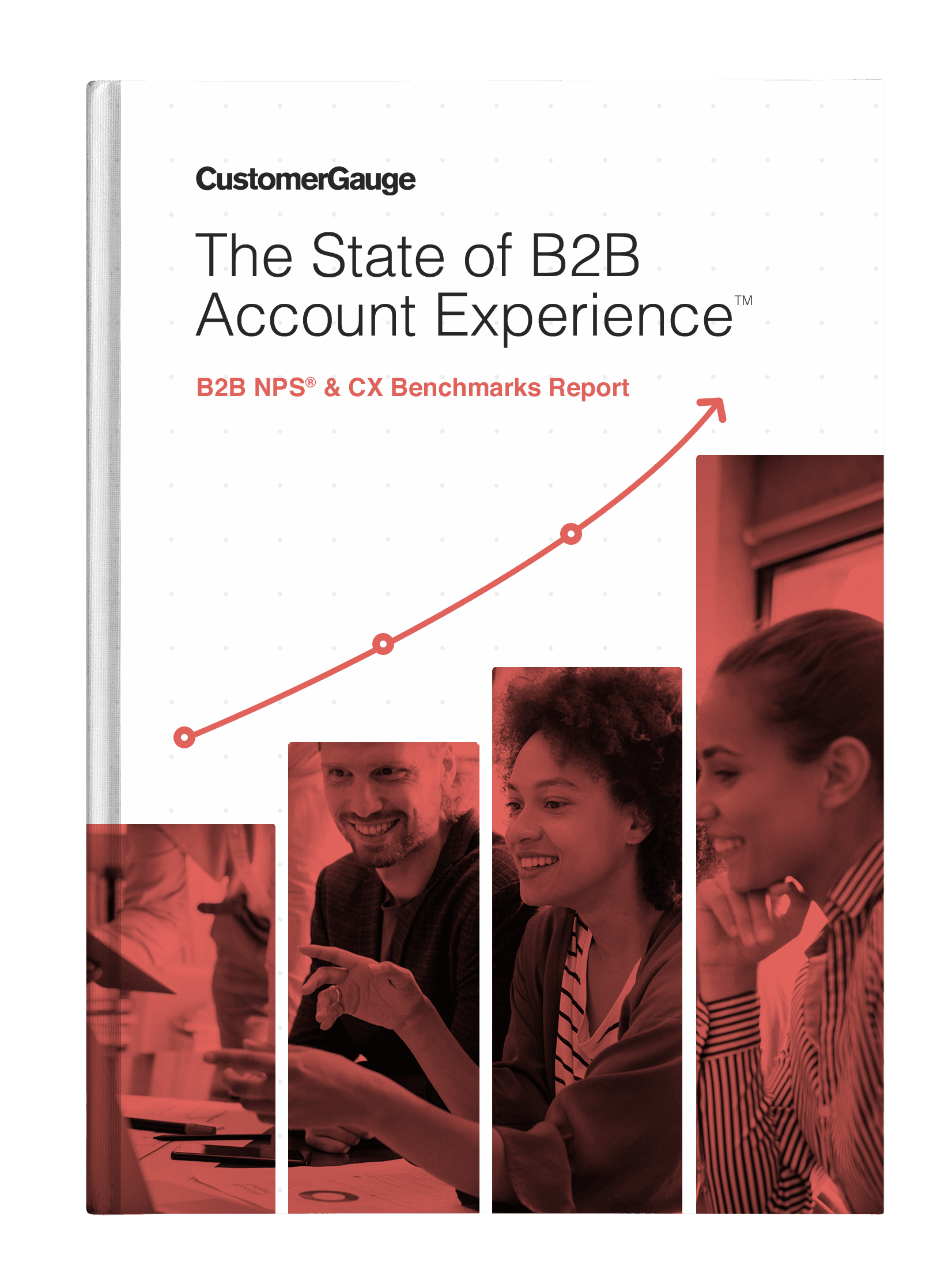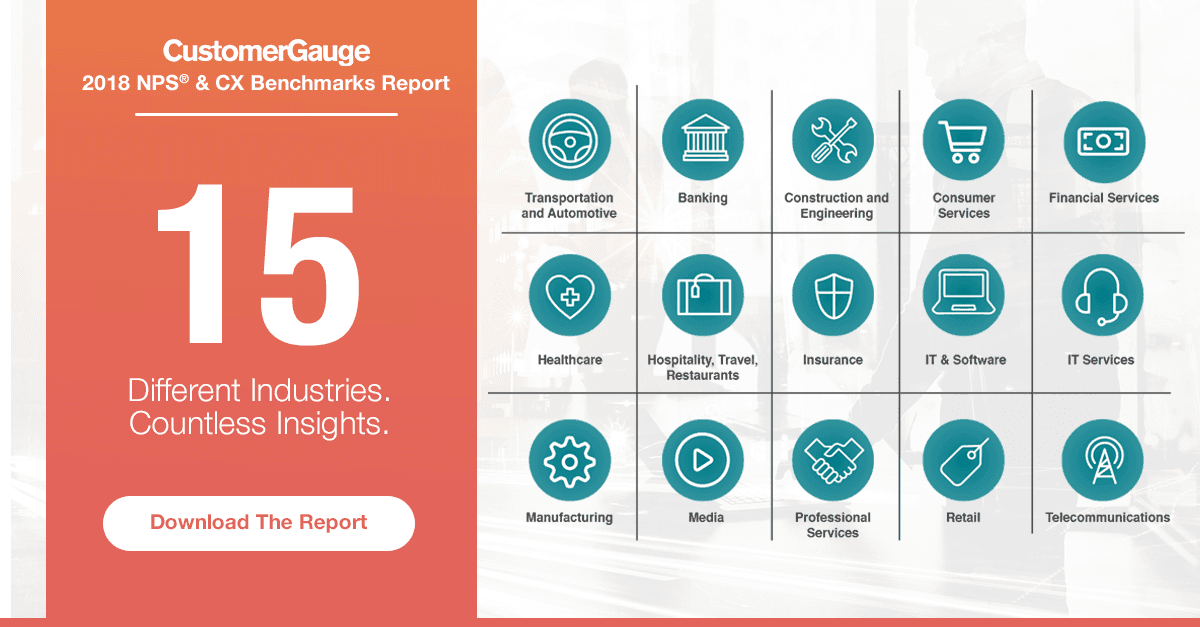T-Mobile NPS Score: Taking the Lead in Telecoms CX
by Ian Luck
Thanks to the scale and availability of smartphones, and the data plans that go with them, competition in the mobile phone industry is more intense than ever. As coverages improve, and more smartphones are available on all carriers, how does a mobile company stand out? How does it keep its customer base, let alone grow it?
T-Mobile has found the secret. Founded in 1990, T-Mobile is a mobile telecommunications subsidiary of Deutsche Telekom AG, a majority shareholder of T-Mobile International. Using a regional setup, T-Mobile is one of the big players in the mobile carrier industry, with T-Mobile US servicing, 72.6 million customers as of 2017, that being 5.7 million customers more than in 2016, and the fourth year in a row of a more than 5 million total net customer increase. T-Mobile earned a total revenue of $40.6 billion in 2017, a record high for the company, and its stock price went up 10.4% in the same year.
The final piece of T-Mobile’s successful 2017? It was also the year the company became the #1 mobile carrier for Customer Service Satisfaction, just as it was in hot commodities amongst mobile carriers. Specifically, carriers like T-Mobile, Verizon, AT&T and Sprint want these commodities expressed as a measurable metric in the form of Net Promoter Score.
Read our full analysis of NPS in Telecommunications here to benchmark yourself and improve your NPS score.
What is NPS?
Net Promoter Score, or NPS, is a metric that asks one, simple question: “On a scale of 0 to 10, how likely are you to recommend this company to a friend?” Depending on how a customer responds, they’re promoters, passives, or detractors. Promoters score 9 or 10, and are extremely happy with their customer experience, often spreading positive word of mouth about a company. Passives give a score of 7 or 8, and aren’t unhappy with their experience, but aren’t singing praises to others either. Detractors give scores between 0 and 6, and they’ve often had a bad experience, and need some issue to be addressed before they start spreading negative word of mouth.
How is NPS calculated?
NPS is calculated by subtracting the percentage of customers that are detractors from the percentage of customers that are promoters, giving a score somewhere on a scale of -100 to 100.
Because it’s a relatively simple score to obtain—companies just need to send a survey asking the single question (which can be expanded on with additional drivers for root cause)—and an easy score to understand, it’s becoming the preferred metric for the mobile carrier industry, carriers now actively seeking ways to improve their NPS to stand out in marketplace.
T-Mobile is one such company, and it’s one of the biggest companies doing it the best. According to NPSBenchmarks.com companies, the average telecommunications NPS is 32; companies like Verizon and AT&T have scores of 11 and 15 respectively. In CustomerGauge’s most recent benchmark report with 468 companies in 15 industries (telecommunications being one of them), over the last three years, the telecom industry has, on average, increased their Net Promoter Score by +13 pts, with an average around 24.
Any score above 0 is pretty good, but T-Mobile’s NPS of 35 truly shines here, particularly above its similarly-sized competition. This is thanks to T-Mobile’s customer first approach to its “un-carrier revolution,” and its commitment to NPS.
How T-Mobile Improved their NPS: Tapping Into the “Customer-First” Philosophy
T-Mobile’s president CEO John Legere doesn’t see keeping customers happy as being an especially difficult thing:
"The secret for having the happiest customers isn’t a secret at all. I’ve been yelling about it for years! Listen to customers, fix their pain points, give them a great deal and awesome coverage. You’d think even Dumb and Dumber would get it by now.”
T-Mobile committed to a Customer First philosophy when Legere became CEO in 2013, completely changing its structure and coverage plans to orient around customer wants and needs. T-Mobile called this the “un-carrier revolution,” and launched an entire marketing campaign around it, ending annual contracts and roaming fees, as well as a dozen other “un-carrier moves" that focused on keeping customers loyal, and working with T-Mobile uncomplicated.
This was an excellent move, as customer effort, the amount of effort or work a customer has to go through in order to complete a transaction or support action with a company, is something that should be addressed, and can even be measured as a metric. However, telecommunications companies often get bogged down in only addressing customer effort concerns, and also tend to resist restructuring to meet customer needs. T-Mobile’s un-carrier moves address a diverse number of issues, and instituting the plan required restructuring that T-Mobile was happy to do to succeed.
A big move for T-Mobile was working hard on their digital customer experience. Before 2015, the digital platforms T-Mobile existed on weren’t a high consideration, but that changed drastically when it became clear customers first experiences with the company were mostly digital. The company website was revamped, the front-end and back-end of the site and other digital platforms were separated to simplify things internally, and in the end, the company saw higher customer engagement, and took 60% of clicks to path to purchase.
A recent un-carrier move for T-Mobile was removing phone menus and bots as part of their customer support services, and having human agents for all service calls instead, no matter what. This move addresses a common customer complaint about “call center runarounds” and getting bounced from “department to department” because it takes so much effort just to complete a call.
This system is just going into place in August 2018, so the effects have yet to be seen, but it seems predictable that people will get more value from talking to people than listening through long menus, or unsuccessfully requesting to speak to a person many times. If nothing else, it shows a consideration for consumers who just want to get their questions and concerns addressed quickly.
The un-carrier revolution is a plan that’s already paying off. Thanks to listening to customers, and being unafraid to adapt to what they said, T-Mobile has seen an uptick in customer happiness that’s putting them above the competition:
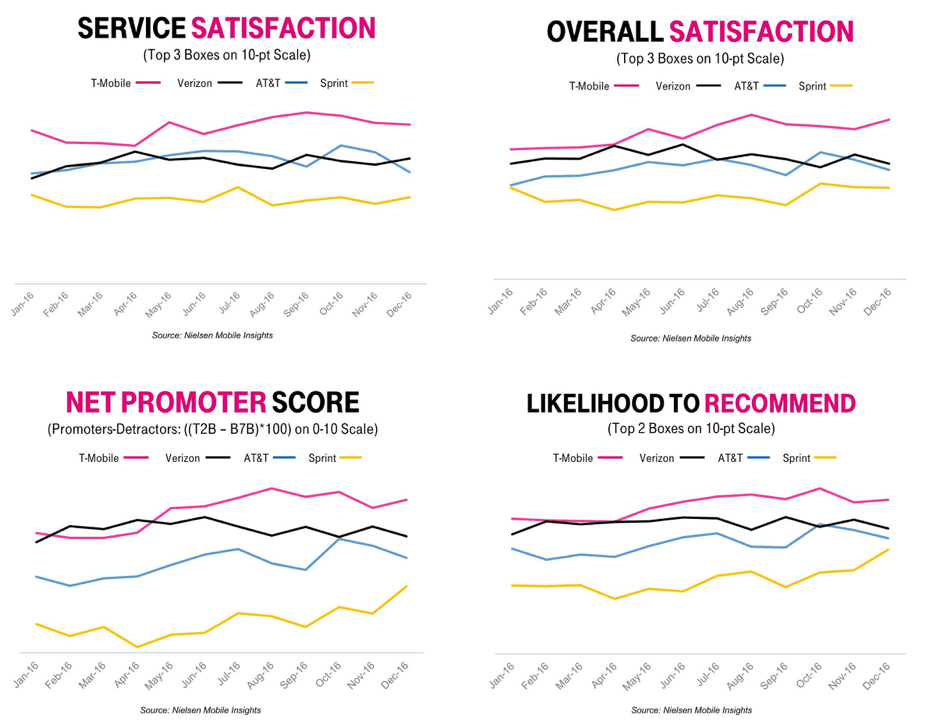
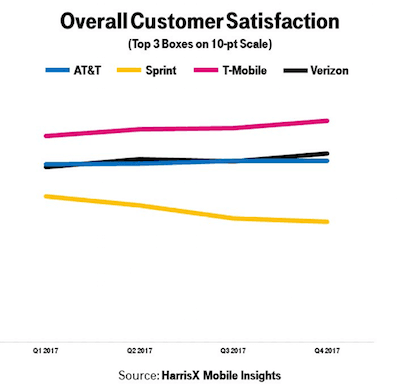
These high levels of customer satisfaction should continue, as T-Mobile continues to listen to customers, and adapt to their needs. But of course, learning what their customers want is all a part of their NPS program.
T-Mobile: A Commitment to Customer Satisfaction
As they measure for overall customer satisfaction, T-Mobile asks customers how likely they are to recommend T-Mobile to others, which is the question NPS asks and answers for businesses. Then, overall customer satisfaction scores are in a range of -100 to 100, which is the scale for NPS:
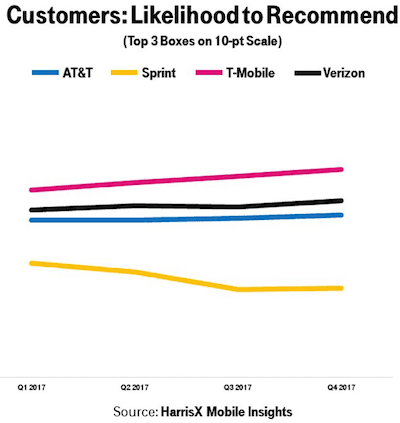
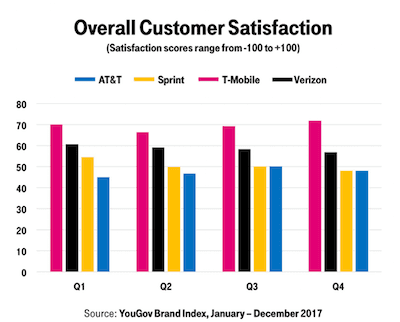
So NPS is directly part of their means of talking to customers. It’s also one of their main means of comparison to their competition, as we see from the diagrams above. T-Mobile understands that the current mobile market is defined by customer satisfaction, and therefore by NPS for measuring it on a large scale. The company, in turn, makes NPS and the customer experience a priority.
T-Mobile continues to show its commitment to NPS through having various surveys on its digital platforms. Some tackle specific experiences, such as their Support Users Feedback survey, but others ask more general questions to get the data relevant to NPS, and pop up seemingly randomly. NPS can only exist through surveys, so T-Mobile’s strategic use of them reflects the company’s intelligence in this area, as well as their commitment to keep measuring it.
With human agents taking over customer service, it’s entirely likely NPS surveys will also be carried out over the phone, or that surveys will be able to be sent just after phone calls to get immediate feedback. The agents will therefore help with customer engagement, getting it to increase, and therefore NPS should start to rise as well.
T-Mobile’s un-carrier revolution is built in the same core philosophies of NPS: that customers should be listened to, and should be the source of all company decisions and actions. That engaged customers are happier customers, and finding a way to increase engagement only helps a business. It’s no wonder T-Mobile is flourishing right now, it’s following steps that can’t help but lead to customer loyalty and financial success. And it’s all thanks to focusing on what customers want, through a metric that’s easy to understand.
Conclusion
T-Mobile’s commitment to customer satisfaction and NPS are paying off in a big way, and we’re excited to see how the thrive in 2018-2019. For more information on the telecommunications industry, best practices and benchmarks, check out the latest NPS Benchmarks report below.
Blog Home





